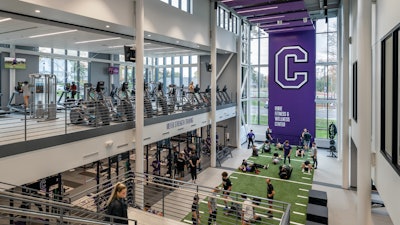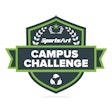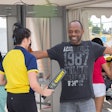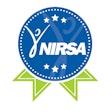
Earlier this year, all 48 full-time employees in Indiana University’s Recreational Sports Department participated in a first-of-its-kind online course developed by NIRSA to help them better understand wellbeing, one of higher education’s biggest buzzwords in recent years. How does wellbeing show up in their work as campus recreation professionals, for example? And how does that work impact overall campus wellbeing?
The eight-week course, titled “Recreation for Wellbeing: Elevating Our Impact,” ran in February and March, anchored by four live 90-minute learning modules. It attracted about 300 participants, including campus recreation professionals, as well as administrators from related departments such as student counseling and health services.
 Josh Downing
Josh Downing
“We want to make sure that our entire team has a foundational knowledge of wellbeing and understands the terminology, because every single person plays a critical role in this,” says Josh Downing, associate director of programming for Recreational Sports at IU, who also is co-chair of NIRSA’s Health & Wellbeing Task Force. “We’re not asking people to change what they’re doing. Keep doing what you’re doing, but start thinking about how to apply the wellbeing lens to the work you’re doing.”
 Mark Ferguson
Mark Ferguson
Years-long emphasis
NIRSA has emphasized wellbeing for the past several years, with many campus recreation departments utilizing the “Inter-association Definition of Well-being” as jointly established in November 2020 by NIRSA, NASPA (an organization of student affairs administrators in higher education) and the American College Health Association. The definition demonstrates that wellbeing is not just about individual wellness. While that’s one important element, wellbeing isn’t possible if the systems and environments that make up those individuals’ communities are not, themselves, well.
“There are a lot of reasons we’re so focused on wellbeing,” Ferguson says. “The most obvious reason has been the changing dynamics and concerns around student mental health. For the students coming to our campuses now, the stigma around mental health certainly seems less than it was a few years ago, but there’s still a long way to go. Another important reason, though, is that we continue to learn more about the broad range of factors that contribute to wellbeing and how important it is for all of us to understand how our work plays a role.”
The stated goal of the Recreation for Wellbeing course was to be able “to advocate recreation’s impact on wellbeing for the campus community.” The four modules were titled “Foundations of Wellbeing,” “Why Is Wellbeing in Recreation Important?,” “Putting Wellbeing into Practice on Your Campus” and “Advocating for Wellbeing: On YOUR Campus & Beyond.”
Participants were expected to leave the course (which makes available continuing education credits) with an action plan to quickly put what they’ve learned into practice and further foster wellbeing within their department and throughout campus.
“Look at campus rec’s evolution — from starting off as just being about physical activity to focusing on student development and now wellbeing,” Ferguson says. “The development of this course is just further acknowledgement of our ultimate purpose.”
“It’s about taking a hard look at policies,” Downing adds. “What does communication to members look like? What does the interview process for full-time employees look like, and what does onboarding look like? How do we make it so that the story of campus rec, of what we’re doing at IU, is undeniable?”
‘Where they belong’
Downing plans to gather his staff early this summer and “reflect” on their own individual action plans, combine them into a department-wide action plan and begin charting a course to help ensure the department is “directly tied to the Indiana University Bloomington health and wellbeing efforts,” he says.
Even before taking the course, IU’s team had scheduled a branding update for the Student Recreational Sports Center, which was built in 1995. When students return in the fall, they’ll be greeted by as much IU color-scheming and branding in that facility as possible.
“They’ll feel like it’s theirs right away, like that’s where they belong,” Downing says. “We have to be very intentional about how we not only build our facilities, but everything down to how we paint them, how we brand them, how clean they are, how effective the signage is. All of those things are critically important and have a direct impact on a student’s wellbeing.”
That increased awareness is no doubt why NIRSA’s initial “Recreation for Wellbeing” course was met with such enthusiasm by campus recreation professionals around the country.
“The response has been great, especially in terms of numbers and initial feedback, and I do think, moving forward, there’s an opportunity to do something similar or have further courses like this,” Ferguson says, noting that participant job titles ranged from graduate assistants up to assistant vice presidents. “That points to the level of interest, and I think that’s kind of unique.”
The course certainly has helped Downing and his staff enhance their continual pursuit of wellbeing — and gain a better understanding of how they fit into the bigger picture.
“By focusing on the whole person, the whole educational experience, the whole institution, the whole community, wellbeing becomes a multifaceted goal and a shared responsibility,” Downing says. “And it’s important for campus rec professionals to realize that we’re part of a bigger system. So if we shift our mindsets and apply this to all that we’re doing, our impact becomes even greater.”

































